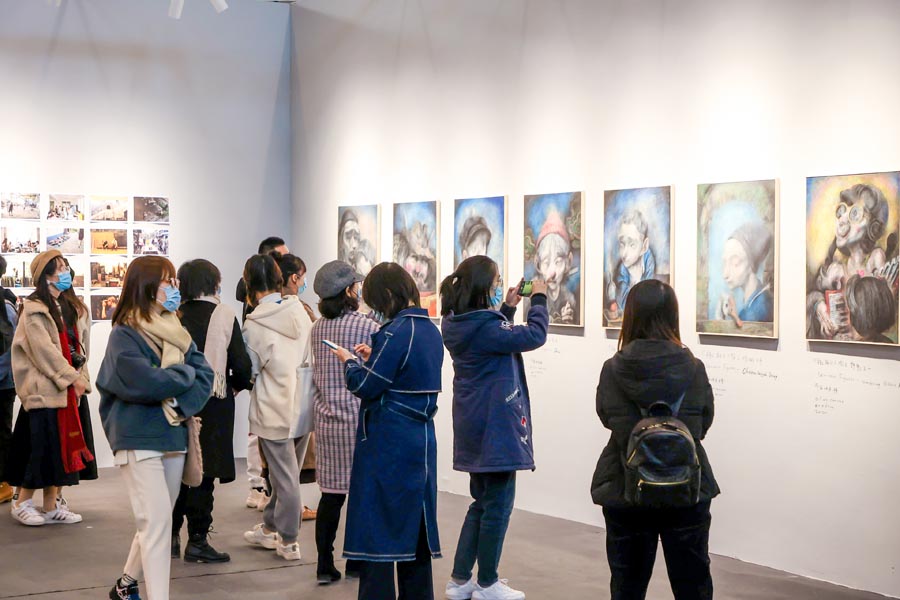A recent fair in Jiangsu’s provincial capital presented new media art, which is a relatively novel genre in the country, Zhang Kun reports in Nanjing.
Nanjing Art Fair International claims to be China’s first such event to solely feature video and new media art.
This year’s edition of the event, which took place from Nov 26 to 29, presented a visual extravaganza to more than 40,000 visitors at the Nanjing International Exhibition Center in Jiangsu province’s capital.
The fair wasn’t disrupted by the pandemic since new media art doesn’t require the complicated process of international shipping, even though 60 percent of the participating galleries are from overseas.

“Nanjing is a city of rich cultural heritage, and I’d like to present a modern and fashionable side of the city,” chief curator Kong Chao says, explaining the decision to focus on the genre.
Also, the nearby city of Shanghai hosts several well-established art fairs. So, NAFI, which was founded last year, chose new media to set itself apart.
NAFI2020 was hosted by Nanjing’s publicity department and cultural and tourism administration, and featured exhibitions from 27 galleries and four museums.
Most galleries were from abroad, Kong says, because new media art is better developed in the West, where it’s also popular.
“In fact, Nanjing has many collectors interested in new media art,” Kong says.
NAFI2019 achieved a sales volume of just under $1 million, and “presales went much better than expected” this year, he says.
Nanjing’s collectors have developed an awareness of new media works’ value and appreciate their relatively low prices. This enables new collectors to access top-notch works from the global scene, he explains.
The city’s contemporary art scene is undergoing a boom, he says.
A series of new private museums have been opening, and Nanjing has been adopting policies to support galleries.
It also pledged to provide social security and pensions for artists who are ready to move in.
“We set up a special booth at NAFI2020 to introduce the policies and services supporting artists and institutions interested in Nanjing,” he says.
“Nanjing is less stressful than Beijing or Shanghai. We have a large number of good universities and art schools here. And its cultural and historical atmosphere has strong appeal, too.”
HdM Gallery, which has operated in Paris, London and Beijing for the past 12 years, participated in NAFI for the first time this year.
The gallery was given free show space at the event, says HdM cofounder Olivier Hervet.
“Besides, we have had some clients in Nanjing,” he says.
It presented a solo exhibition of digital photographs by 30-year-old Chinese artist Hu Weiyi and sales started from the first day.
One of NAFI’s missions was to introduce some of the best works and practices of contemporary art to the city, and provide quality cultural experiences for its people, Kong says.
“So, we prepared colorful events aside from the main exhibition”.
The event featured Spain as its highlight country this year, with Spanish food and drinks showcased alongside artworks by Salvadore Dali and Pablo Picasso.
NAFI2020 also presented a fashion show on the opening evening, featuring the debuts of seven designers from the Federation de la Haute Couture et de la Mode.
And two special projects-the W! ld, focusing on young designers and alternative culture, and NAFI Jeans, a creative market place for handicrafts and new creations incorporating traditional Chinese heritage-took place alongside the main exhibition.




